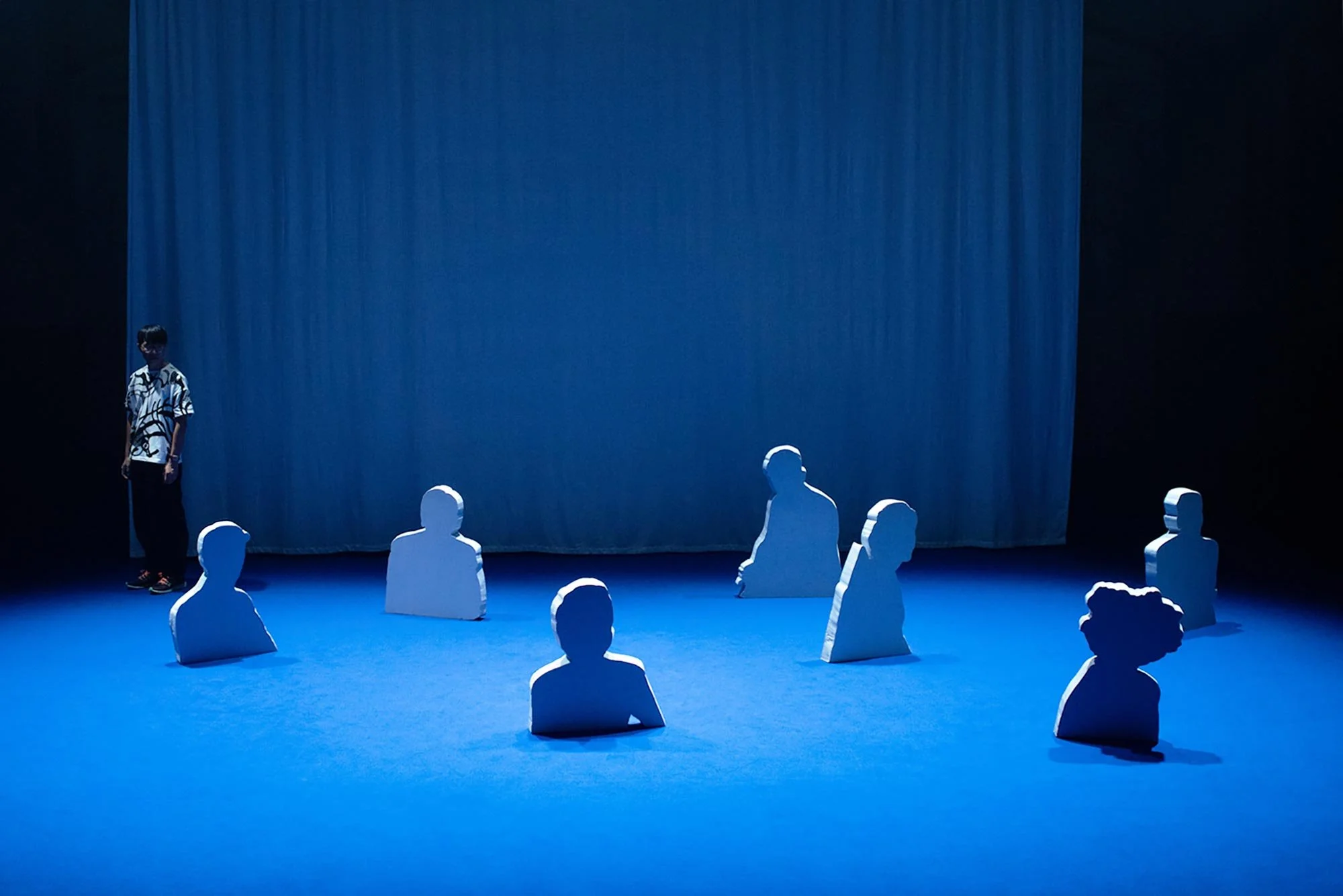Mitsouko & Mitsuko
Research, dramaturgical collaboration, and editor for a stage performance Mitsouko & Mitsuko by Michikazu Matsune
Stage performance, 85min, In English, German and Japanese
Premiered at Wiener Festwochen 2021. Presented at Festival Internalzionale del Thatro, Lugano, 2021; Theaterfestival Basel, 2022; Théâtre Vidy-Lausanne, 2023; Le Festival d’Automne à Paris, 2023.
The performance Mitsouko & Mitsuko by Michikazu Matsune begins with the stories of two female figures with almost the same name. Shedding light on the collective and individual stories in the turbulent chronicle of the first half of the 20th century, it draws the ambivalence and complexity between Orientalism, Ornamentalism, and the Yellow Peril and the opposing political tensions in the global context. Combined with the artist’s personal and family memory, this stage performance narrates the entangled histories through the various protagonists in novels, theatre plays, and films of the time: A French Japonisme romantic novel and Japanese modernization with its colonial ambition, East Asian migration to the United States, forgotten Japanese stars in the silent film era of Hollywood, and Yellow Peril, anti-East Asian ideology agitated hundred years ago in the West. The societal struggles intertwine even more – from the early European unification movement, a blossoming Vienna's theatre scene in the early 20th century, to the Exile in the wake of rising totalitarianism.
The interconnections of seemingly unrelated things in the performance confront the audience with the politics of gaze based on all kinds of systematic hierarchies in race, ethnicity, gender, and class and the violence of knowledge production mechanism embedded within the popular visual culture. On the cultural side, the ‘exotic’ and the foreign are desired and welcomed. On the political side, bodies and knowledge as capital are exploited while they are mercilessly marginalized at the point when they exceed and become a threat to national economies. Caught in the nations’ control apparatus, individual bodies are censored, categorized, silenced, and dehumanized – in other words, racialized, gendered, and sexualized – when they fail to align with national interests. History is not repeating itself. Rather, it is a matter of where the global matrix of power is stabilized.
In Mitsouko & Mitsuko, Matsune’s approach of “imagining what has been not told” is explored with humor and inspiration, referring to the anecdotes and movements in modern dance, theatres, and films. Bridging between fiction and reality while traversing cities in turbulent times, the work is a journey to re-imagine histories that, like smoke, are visible only fleetingly but keep haunting the present.
Accompanying publication “Notes for Mitsouko & Mitsuko” Photo: Nurith Wagner-Strauss


